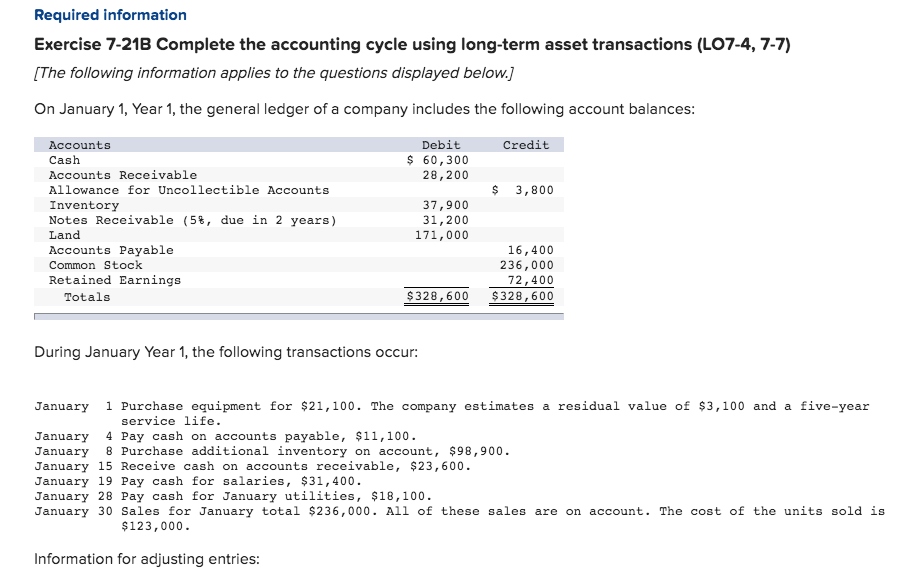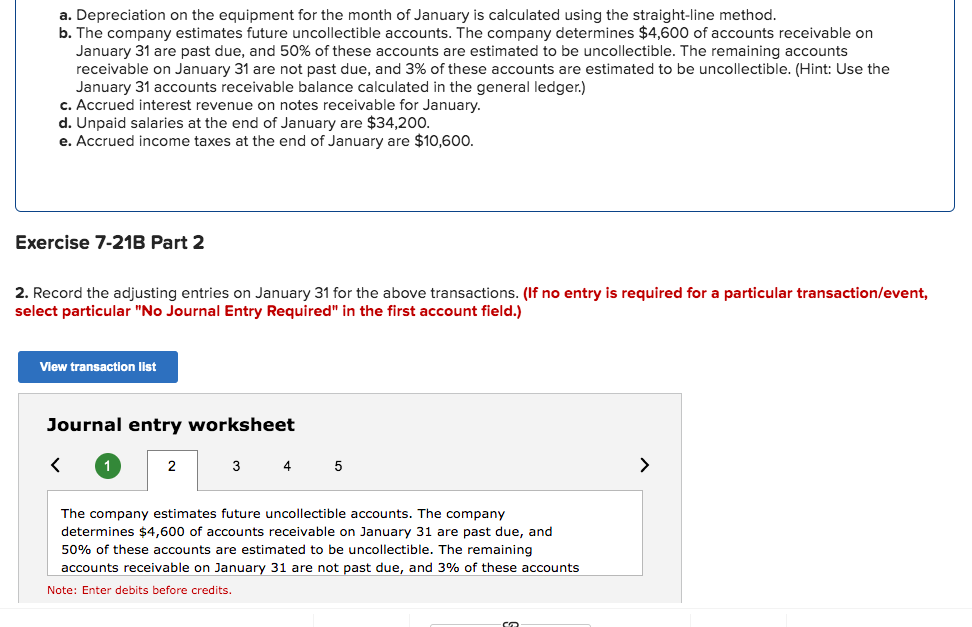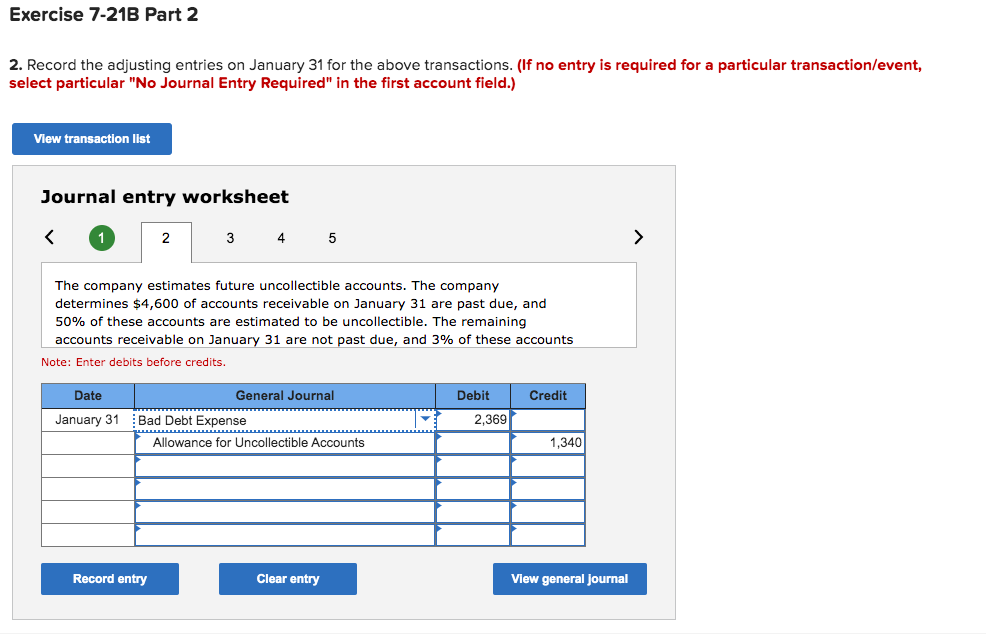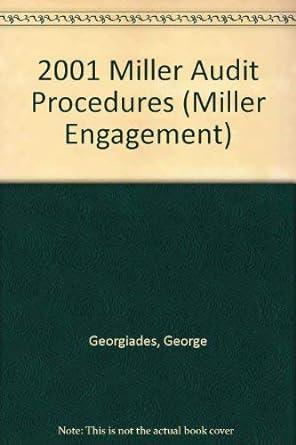


Required information Exercise 7-21B Complete the accounting cycle using long-term asset transactions (LO7-4, 7-7) (The following information applies to the questions displayed below.] On January 1, Year 1, the general ledger of a company includes the following account balances: Credit Debit $ 60,300 28,200 $ 3,800 Accounts Cash Accounts Receivable Allowance for Uncollectible Accounts Inventory Notes Receivable (5%, due in 2 years) Land Accounts Payable Common Stock Retained Earnings Totals 37,900 31,200 171,000 16,400 236,000 72,400 $328,600 $328,600 During January Year 1, the following transactions occur: January 1 Purchase equipment for $21,100. The company estimates a residual value of $3,100 and a five-year service life. January 4 Pay cash on accounts payable, $11,100. January 8 Purchase additional inventory on account, $98,900. January 15 Receive cash on accounts receivable, $23,600. January 19 Pay cash for salaries, $31,400. January 28 Pay cash for January utilities, $18,100. January 30 Sales for January total $236,000. All of these sales are on account. The cost of the units sold is $123,000. Information for adjusting entries: a. Depreciation on the equipment for the month of January is calculated using the straight-line method. b. The company estimates future uncollectible accounts. The company determines $4,600 of accounts receivable on January 31 are past due, and 50% of these accounts are estimated to be uncollectible. The remaining accounts receivable on January 31 are not past due, and 3% of these accounts are estimated to be uncollectible. (Hint: Use the January 31 accounts receivable balance calculated in the general ledger.) c. Accrued interest revenue on notes receivable for January. d. Unpaid salaries at the end of January are $34,200. e. Accrued income taxes at the end of January are $10,600. Exercise 7-21B Part 2 2. Record the adjusting entries on January 31 for the above transactions. (If no entry is required for a particular transaction/event, select particular "No Journal Entry Required" in the first account field.) View transaction list Journal entry worksheet The company estimates future uncollectible accounts. The company determines $4,600 of accounts receivable on January 31 are past due, and 50% of these accounts are estimated to be uncollectible. The remaining accounts receivable on January 31 are not past due, and 3% of these accounts Note: Enter debits before credits. Exercise 7-21B Part 2 2. Record the adjusting entries on January 31 for the above transactions. (If no entry is required for a particular transaction/event, select particular "No Journal Entry Required" in the first account field.) View transaction list Journal entry worksheet The company estimates future uncollectible accounts. The company determines $4,600 of accounts receivable on January 31 are past due, and 50% of these accounts are estimated to be uncollectible. The remaining accounts receivable on January 31 are not past due, and 3% of these accounts Note: Enter debits before credits. Debit Credit Date General Journal January 31 Bad Debt Expense Allowance for Uncollectible Accounts 2,369 1,340 Record entry Clear entry View general Journal









